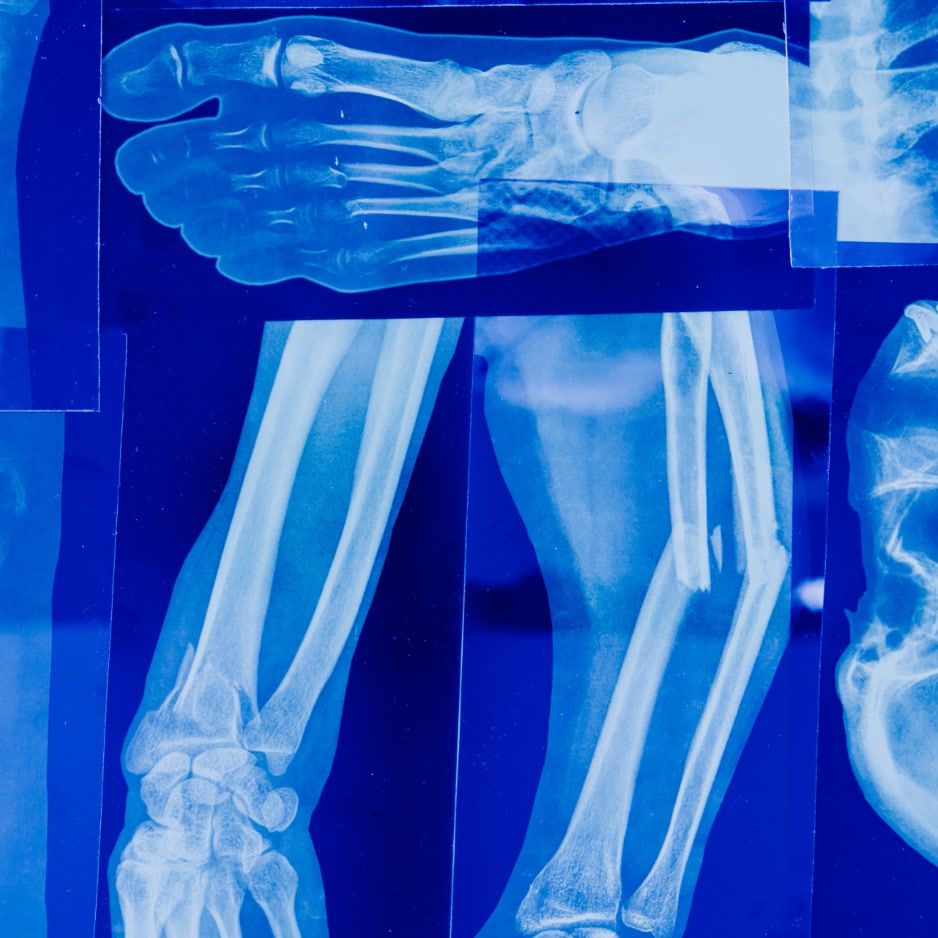Exploring the Impact of GLP-1 on Muscle Mass

Exploring the Impact of GLP-1 on Muscle Mass
If you're looking to build or maintain muscle mass, you may have heard of GLP-1. This peptide hormone has been studied extensively for its role in regulating insulin and glucose levels, but emerging research is also exploring its potential impact on muscle health. In this article, we'll dive deeper into the relationship between GLP-1 and muscle mass, what current research has found, and how this information may be useful for anyone interested in optimizing their muscle health.
Understanding GLP-1 and Its Functions
What is GLP-1?
GLP-1, or glucagon-like peptide 1, is a hormone secreted by cells in the small intestine in response to food intake. Its main function is to help regulate blood sugar levels by stimulating insulin secretion and inhibiting glucagon, another hormone that increases blood sugar.
When GLP-1 is released, it binds to specific receptors on pancreatic beta cells, which are responsible for producing insulin. This binding triggers a signaling pathway that leads to increased insulin secretion and decreased glucagon secretion, resulting in lower blood sugar levels.
The Role of GLP-1 in the Body
In addition to its role in regulating glucose and insulin, research has indicated that GLP-1 may have broader effects on the body. For example, it has been shown to promote satiety, or feelings of fullness, which may be useful for weight management.
GLP-1 also appears to have anti-inflammatory properties and may play a role in cardiovascular health. Studies have suggested that GLP-1 receptor agonists may have benefits beyond glucose control, such as reducing the risk of heart attack and stroke in people with diabetes.
Get weekly updates.
GLP-1 and Insulin Regulation
There is extensive research exploring GLP-1's role in insulin regulation and glucose metabolism. This has led to the development of GLP-1 receptor agonist medications, which are used to manage type 2 diabetes by promoting insulin secretion and lowering blood glucose levels.
GLP-1 receptor agonists work by mimicking the effects of GLP-1 in the body. They bind to GLP-1 receptors on pancreatic beta cells, stimulating insulin secretion and lowering blood glucose levels. These medications have been shown to be effective in improving glycemic control and reducing the risk of cardiovascular disease in people with type 2 diabetes.
Overall, GLP-1 is an important hormone with a variety of functions in the body. Its role in regulating glucose and insulin has led to the development of new medications for managing type 2 diabetes, while its effects on satiety and cardiovascular health may have broader implications for overall health and well-being.
The Relationship Between GLP-1 and Muscle Mass
When it comes to maintaining a healthy body, muscle mass plays an important role. Not only does it help with movement and posture, but it also contributes to overall metabolic health. That's why recent research into the relationship between GLP-1 and muscle mass is so exciting.
GLP-1 Receptors in Muscle Tissue
As mentioned in the original text, researchers have discovered that muscle tissue contains GLP-1 receptors. These receptors are the key to understanding how GLP-1 may impact muscle cells directly. By binding to these receptors, GLP-1 may be able to influence muscle growth and repair.
But what exactly are GLP-1 receptors? These are specialized proteins that are found on the surface of cells. They act as gatekeepers, controlling what molecules are allowed to enter the cell and trigger a response. In the case of GLP-1 receptors, the presence of GLP-1 can activate a signaling pathway within the muscle cell, leading to various physiological effects.
Effects of GLP-1 on Muscle Protein Synthesis
One of the most promising areas of research into GLP-1 and muscle mass is the potential for GLP-1 to stimulate muscle protein synthesis. This is the process by which the body repairs and builds muscle tissue. By increasing muscle protein synthesis, GLP-1 may be able to help individuals increase their muscle mass and strength.
But how exactly does GLP-1 impact muscle protein synthesis? Researchers believe that GLP-1 may be able to activate certain signaling pathways within muscle cells that promote protein synthesis. Additionally, GLP-1 may be able to increase the availability of nutrients like amino acids, which are the building blocks of protein.
GLP-1 and Muscle Atrophy
Muscle atrophy is a common side-effect of aging, inactivity, and certain medical conditions. It can lead to a loss of muscle mass and function, which can have serious impacts on overall health and quality of life. That's why researchers are interested in exploring the potential for GLP-1 to counteract muscle atrophy.
Recent studies have suggested that GLP-1 may be able to promote muscle growth and regeneration, which could help to offset the effects of muscle atrophy. By activating certain signaling pathways within muscle cells, GLP-1 may be able to stimulate the production of new muscle tissue and prevent the breakdown of existing muscle.
The Potential Benefits of GLP-1 for Muscle Health
GLP-1, or Glucagon-like peptide-1, is a hormone that plays a crucial role in regulating blood sugar levels. While it is primarily known for its effects on glucose metabolism, recent research has suggested that GLP-1 may also have significant benefits for muscle health.
GLP-1 and Muscle Recovery
If you're an athlete or work out regularly, you may be interested in how GLP-1 can impact muscle recovery. Some research has suggested that GLP-1 may promote muscle repair and recovery after strenuous exercise, potentially reducing muscle soreness and enhancing overall fitness.
One study published in the journal Diabetes, Obesity and Metabolism found that GLP-1 receptor agonist medications improved muscle recovery in people with type 2 diabetes. Participants who received the medication had less muscle soreness and recovered faster after exercise compared to those who did not receive the medication.
Another study published in the Journal of Diabetes and its Complications found that GLP-1 may also improve muscle function in people with type 2 diabetes. Participants who received GLP-1 therapy had increased muscle strength and improved physical performance compared to those who did not receive the therapy.
GLP-1 and Exercise Performance
In addition to its effects on muscle recovery, GLP-1 may also have the potential to enhance exercise performance. For example, one study found that GLP-1 receptor agonist medications improved endurance and physical activity in people with type 2 diabetes.
Another study published in the Journal of Clinical Endocrinology and Metabolism found that GLP-1 therapy improved exercise capacity in people with heart failure. Participants who received GLP-1 therapy had increased oxygen uptake and improved exercise tolerance compared to those who did not receive the therapy.
GLP-1 and Age-Related Muscle Loss
Muscle loss is a common side-effect of aging, and can have significant impacts on mobility, balance, and overall health. Some recent research has suggested that GLP-1 may help counteract age-related muscle loss by promoting muscle growth and repair.
A study published in the Journal of Cachexia, Sarcopenia and Muscle found that GLP-1 therapy improved muscle mass and strength in older adults with type 2 diabetes. Participants who received GLP-1 therapy had increased muscle mass and improved physical function compared to those who did not receive the therapy.
Overall, while more research is needed to fully understand the potential benefits of GLP-1 for muscle health, the current evidence suggests that this hormone may have significant implications for athletes, older adults, and anyone interested in improving their muscle function and overall fitness.
Current Research on GLP-1 and Muscle Mass
GLP-1, or glucagon-like peptide-1, is a hormone that is naturally produced in the body and is involved in regulating blood sugar levels. In recent years, researchers have become interested in the potential effects of GLP-1 on muscle mass and strength.
Animal Studies on GLP-1 and Muscle
While most of the research on GLP-1 and muscle health has been conducted on animals, the results have been promising. For example, one study found that administering GLP-1 to rats increased muscle mass and strength, while another found that GLP-1 promoted muscle repair and regeneration in mice.
These findings suggest that GLP-1 may have potential as a treatment for conditions that involve muscle wasting or weakness, such as muscular dystrophy or sarcopenia.
Human Clinical Trials
There have been fewer clinical trials exploring the effects of GLP-1 on human muscle mass, but the results thus far are encouraging. For example, one study found that administering GLP-1 to healthy adults increased muscle protein synthesis, while another found that GLP-1 receptor agonist medications improved muscle strength in people with type 2 diabetes and obesity.
These results suggest that GLP-1 may have potential as a treatment for conditions that involve muscle loss or weakness in humans as well.
Limitations and Future Directions
While the research on GLP-1 and muscle mass is promising, there are still many questions that need to be answered. For example, it is unclear what the optimal dosages and delivery methods would be for promoting muscle growth, and more research is needed to understand the potential long-term effects of GLP-1 on overall health and well-being.
Additionally, most of the studies conducted thus far have been relatively small and short-term, so more large-scale and long-term studies are needed to fully understand the potential benefits and risks of GLP-1 for muscle health.
Despite these limitations, the research on GLP-1 and muscle mass is an exciting area of study that has the potential to lead to new treatments for a variety of conditions that involve muscle loss or weakness.
Conclusion
Overall, the emerging research on GLP-1 and muscle mass is exciting and offers new insights into how our bodies function. While there is still much to be learned about the effects of GLP-1 on muscle health, the preliminary results suggest that it may have the potential to enhance muscle growth, repair, and function. As always, if you're interested in exploring the use of GLP-1 for muscle health, be sure to speak with your healthcare provider to determine if it's right for you.
You can measure your body fat and composition, lean mass gains and losses over time, and bone health, by getting regular DEXA scans. DEXA scans can help you pinpoint regional changes in your muscle and fat as you work towards your goals. Your data will accrue and compare side by side in your BodySpec reports, so you can stay on track to being your best self. Book an appointment today!


